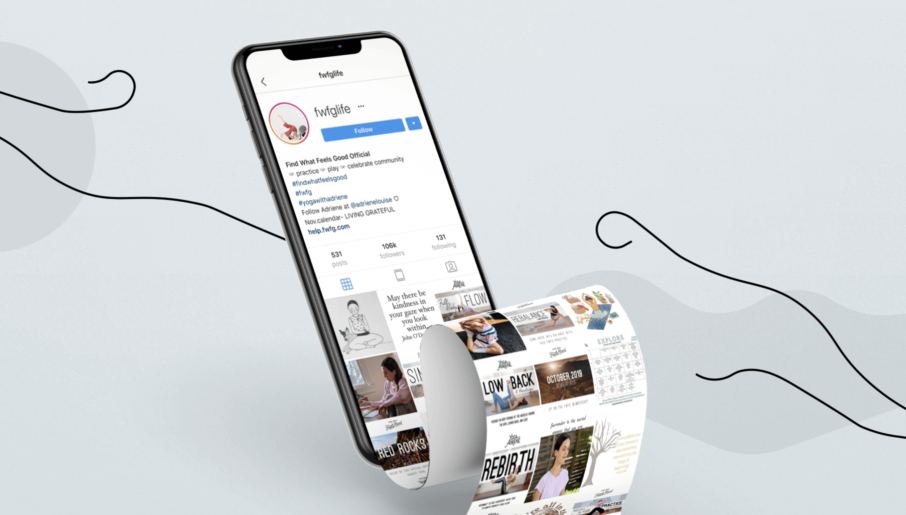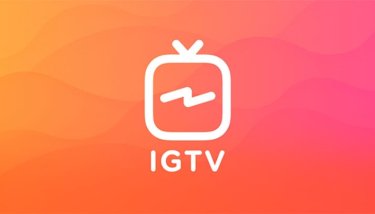You’ve already got a loyal following on Instagram, so now’s the time to take the next step and start making money from the app, just like all the other successful creators out there.
Unsure where to start? We’ve got you covered on all aspects of how to monetize Instagram with these 7 proven strategies:
- Use influencer marketing to your advantage
- Join an affiliate network
- Offer video ad placements
- Create and sell your own products
- Offer coaching or consulting services
- Host live streams to earn badges
- Launch an Instagram subscription
First, let’s look at the earning potential for your Instagram…
How much you can earn: average Instagram earnings by size
The burning question on your mind might be: how much can I earn as a creator on Instagram?
While this varies widely from one account to the next, there are average ranges for how much you can potentially earn from sponsored posts and video ads based on the number of followers you have, and your overall engagement rate.
Influencer Marketing Hub’s research shows how much you could earn from a single sponsored post, depending on how many Instagram followers you have:
- Nano-influencers with less than 10,000 followers, earn between $10 and $100 per post
- Micro-influencers with 10,000–50,000 followers, earn between $100 and $500 per post
- Mid-tier influencers with 50,000–500,000 followers, generate between $500 and $5,000 per post
- Macro-influencers with 500,000–1,000,000 followers, can earn between $5,000 and $10,000 per post
- Mega-influencers with more than 1,000,000 followers, generate over $10,000 per post
Equally as important as your follower count are your engagement rates. When it comes to video ad placements, for accounts with an average engagement rate (up to 3.5%), the average pay you can expect from video ads on Instagram is $0.01- $0.05 per 1,000 views.
Creators with high engagement rates (3.5% and above) can earn an average of $5-$6 per 1,000 views.
Research shows that the average Instagram engagement rate is 2.88% —but the higher, the better. A high engagement rate, even with a smaller audience, will net higher pay than a huge following that doesn’t engage with your Instagram posts.
With all of that in mind, let’s dive into our 7 strategies for monetizing Instagram…
7 strategies for making money on Instagram
1. Use influencer marketing to your advantage
What is influencer marketing?
A social media influencers’ ultimate goal is to work with their dream brands and earn big bucks.
Also known as influencer marketing, this option allows you to collaborate with brands to create sponsored posts which promote a product, service, or campaign.
Why creators love influencer marketing
It’s a popular strategy: some 40% of Instagram influencers monetize their accounts with sponsored content.
There’s a huge amount of earning potential, and the more followers you have, the more you can earn. For example, creator Shriya Boppana shares:
“Per in-feed post, I make on average $300-$400. Per contract, I make $1,200—which is a few in-feed posts plus tons of giveaways and free merch every month of the contract duration.”
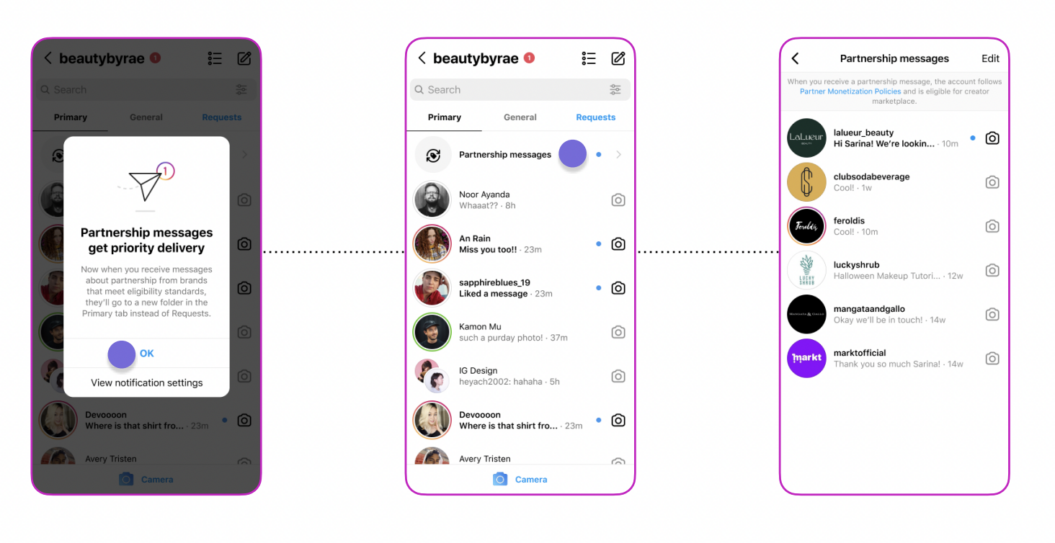
As long as you fulfill the obligations in your contract, it’s a guaranteed source of income, which provides the lifestyle freedom that many creators aspire to.
Downsides of influencer marketing to keep in mind
The main downside to monetizing Instagram through sponsored posts is that you are having to advertise brands and products to your followers.
This means aligning with the brand guidelines and following the criteria they set out for how you incorporate their product, and how often you should post.
Keep in mind too that Instagram requires creators and influencers to disclose when they’re posting sponsored content. It’s best practice to mention when your posts are sponsored ads!
What does influencer marketing look like?
Influencer marketing posts typically focus on direct product placement through tutorials, giveaways, and unboxings. But you can diversify your channels by leveraging your Instagram followers and redirecting them to your own website, blog post, or email list.
Here’s an example from the Instagram account of nutrition and wellness influencer Elizabeth Moye. It’s a standalone post where she showcases Good Culture’s probiotic milk in a recipe:
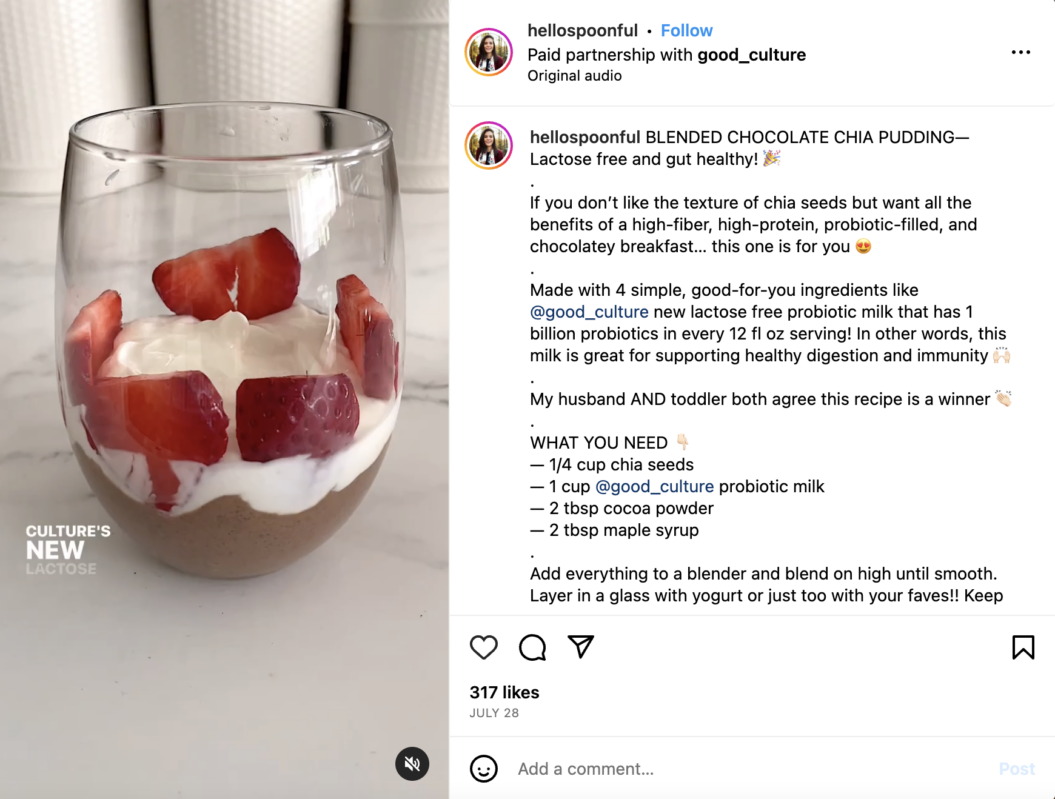
You can see how Elizabeth seamlessly worked the product placement into a valuable piece of content. It’s more than just her holding a carton of milk and posing; it’s something that her audience can go away and use.
How to get started with influencer marketing
Instagram’s Brand Collabs Manager tool makes it easier than ever to get discovered for paid partnerships and connect with brands that best match your objectives.
To be eligible for the Brand Collabs Manager tool, you need to have 1,000 followers and at least one of these criteria:
- 15,000 post engagements (number of people who have engaged with your posts through likes, comments, shares, and more) in the last 60 days.
- 180,000 minutes viewed in the last 60 days.
- 30,000 1-minute views for 3-minute videos in the last 60 days
Another option is to research and identify your favorite brands and consider whether your audience will identify with these products. Then, engage with their profiles by leaving comments, liking their posts, and demonstrating your value as the superfan you are.
When you’ve started to see some interaction from them, you can slide into their DMs to see if they’re interested in working together.
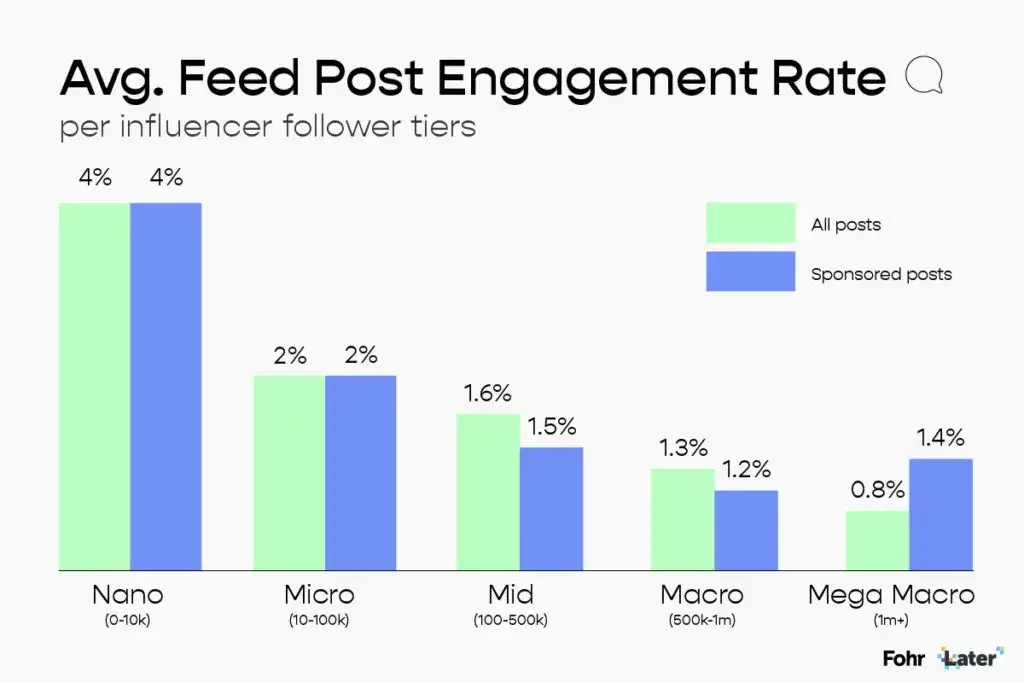
2. Join an affiliate network
What is affiliate marketing?
Affiliate marketing is another popular way to monetize Instagram. It involves working with a brand or business as an “ambassador” to promote their products or services in exchange for a portion of revenue.
Here’s how it works:
- Sign up as an affiliate
- Use the provided unique affiliate link or code in your post(s) or Instagram bio
- Receive a percentage of every purchase made
Why creators love affiliate marketing
Affiliate marketing is one of the easiest ways to make money on Instagram because most products you’re already using have affiliate programs. The barrier to entry is low and thousands of top brands already have a self-enrollment program in place. It only takes a few minutes to sign up and get started.
The best part: Instagram shopping is booming, and you can have your own Instagram Shop that showcases the products you’re affiliated with.
The most profitable income stream related to my Instagram would be the Amazon influencer program. By leveraging my following I can also create product reviews that get posted to Amazon and earn daily commissions. I have made over $6,000 year to date with limited time committed to this monetization strategy.
Ryan Thompson, founder of Seeking Discovery
Downsides of affiliate marketing to consider
As an affiliate marketer, you could earn between 5% to 50% commission on each product you sell, so there’s no set standard on what you can expect to gain from it. It largely depends on the industry or type of product you’re promoting, the product’s price, and your affiliate partner’s profit margin.
What does affiliate marketing look like on Instagram?
You’ve probably already seen affiliate marketing in action while scrolling through your Instagram feed.
Take this Instagram post by The Rambling Spaniels, for example—a pet influencer boasting over 20K Instagram followers. When someone buys the robe using their affiliate code, Cooper and Sunny (and their humans) get a commission.
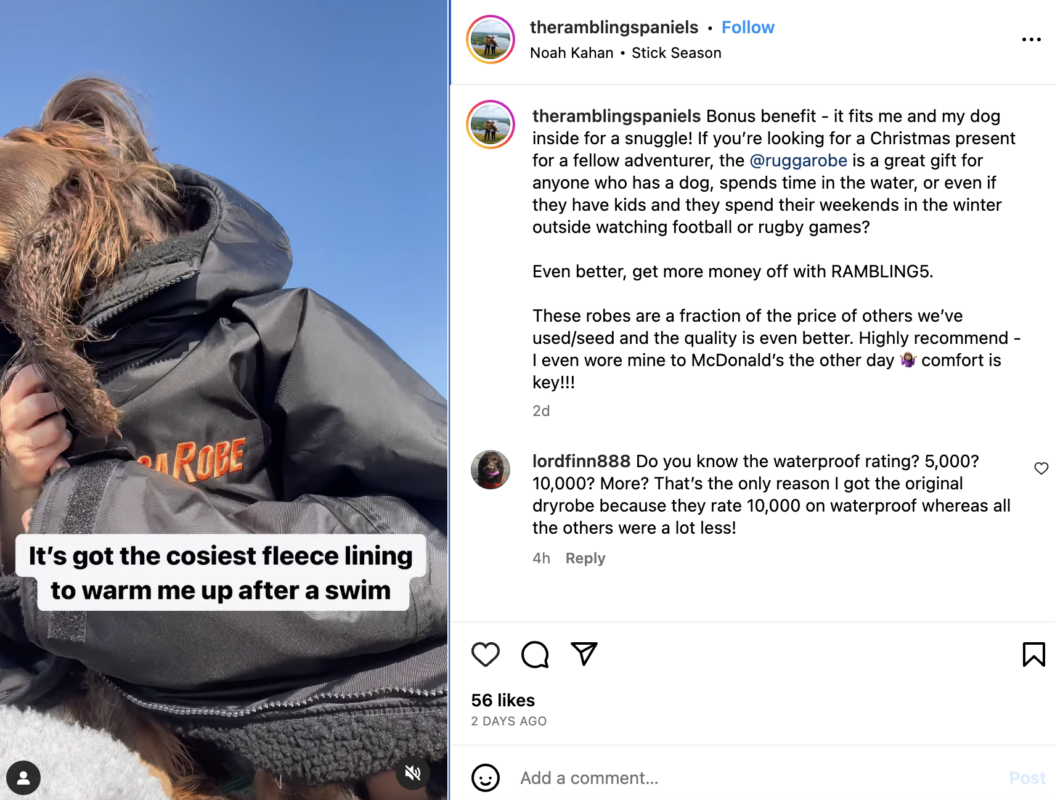
How to get started with affiliate marketing on Instagram
Getting started as an affiliate is a fairly straightforward process. Just hop over to Google and search: [product name] + “become an affiliate” to see if they have one or not. Then, simply fill in the necessary details to sign up.
You can also consider an affiliate marketplace to get started. It’s a network that connects affiliates with merchants, such as Amazon Affiliate or ClickBank.
It’s best to stick to goods and services that fit your niche and that you personally believe in, these will resonate most with your target audience, and have the largest impact. The last thing you want is your audience to feel like you’re selling them out by promoting products they’re not interested in.
3. Offer video ad placements
What are video ad placements?
Product placements or video ads are as ageless as advertising, but the technique truly came into vogue with the rise of video. A brand will pay you to feature their product in your Instagram stories or videos, and you’ll generate some cash for advertising it which is measured by cost per 1,000 views.
Why creators love video ad placements
Depending on your clout, what you’re spotlighting and to whom, there’s a wide range for potential earnings. It’s a relatively easy way to earn money on Instagram because all you need to do is incorporate the product into your videos.
If you feature products that you already use, or that fit naturally into your lifestyle and video content then it’s a win- win!
Just remember the more views you generate, the greater the profit.
Downsides of video ad placements to consider
While there is a lot of earning potential here, the downside to this monetization model is that you need to generate a high number of views for each video to make it profitable.
Additionally, there’s the obvious advertising element in your content. Like with affiliate marketing, choosing products that you would personally use and that align with your values and overall brand ensures product placements come across as authentic for your followers.
What do video ad placements look like?
Emily Miller is a fashion influencer who uses product placement videos to monetize her Instagram following. She shows products she would personally use—like this sponsored post for Vanquish Fitness’ workout clothes:
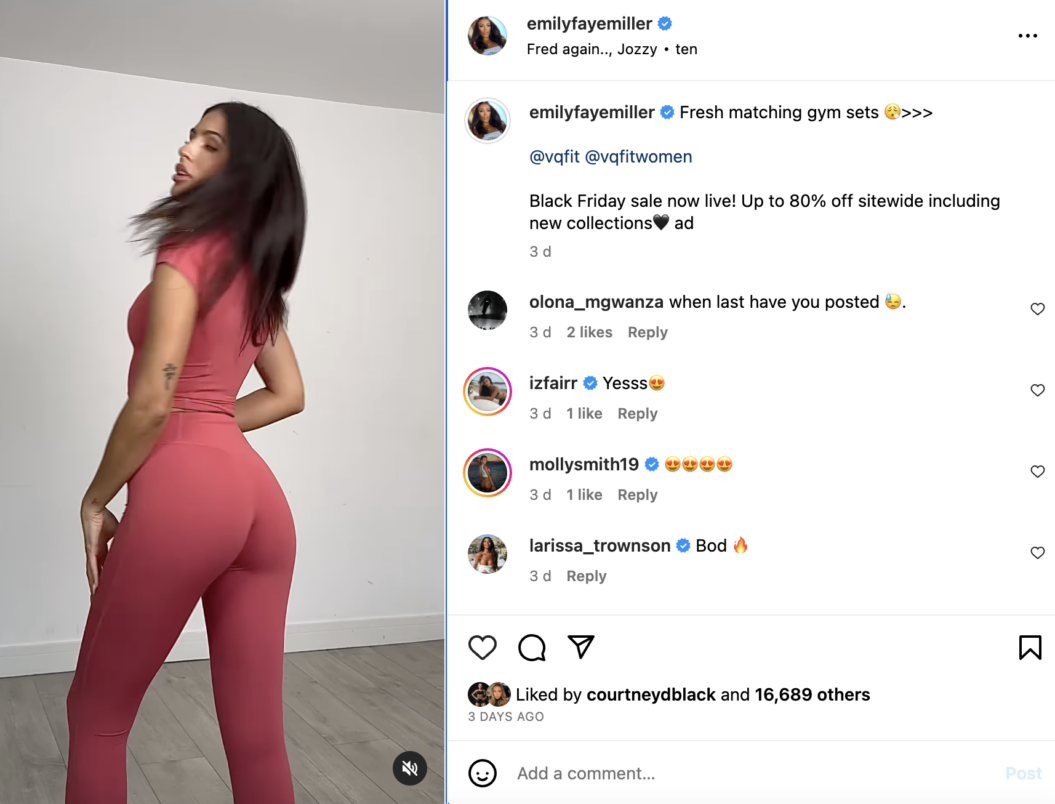
How to get started with video ad placements
If you’re wondering how to get started with product placements, your best bet is to approach brands directly with your pitch and prepare your proposal in detail.
Once you’re at the stage of creating content, you can use these 4 types of video for product placements on Instagram:
- Reels: Product placements with Instagram Reels can be anything from styling and make-up tutorials to snack reviews.
- Instagram stories: Showcase products in super-short, unedited videos from your daily life.
- Long-form video: Use longer grid videos for longer tutorials or reviews.
- Instagram live: Produce live videos if you want to get real-time engagements and questions.
4. Create and sell your own products
What are instagram products?
If you already have loyal fans that want to experience your brand in the real world, selling your own merch is an excellent way to monetize your Instagram presence. Your products can either be part of your content or the content itself (like snippets from paid memberships).
Why creators love Instagram products
The best part about creating your own products is having complete control over what you sell, how much you charge, and the design of your product.
If you’re also monetizing your Instagram profile with a membership site, these one-off products make for great premium content that existing members can get access to with their subscription.
Downsides to Instagram products to keep in mind
Creating goods as your main source of content is a lot of work. You’ll have to deal with the logistics of creating your product or service, and there’s no guarantee of earning revenue in return— it’s on you to put the work in to create, market and sell it.
What do Instagram products look like?
Freelance writer Kat Boogaard creates her own mugs from her online store through the dropshipping model and promotes them on Instagram:
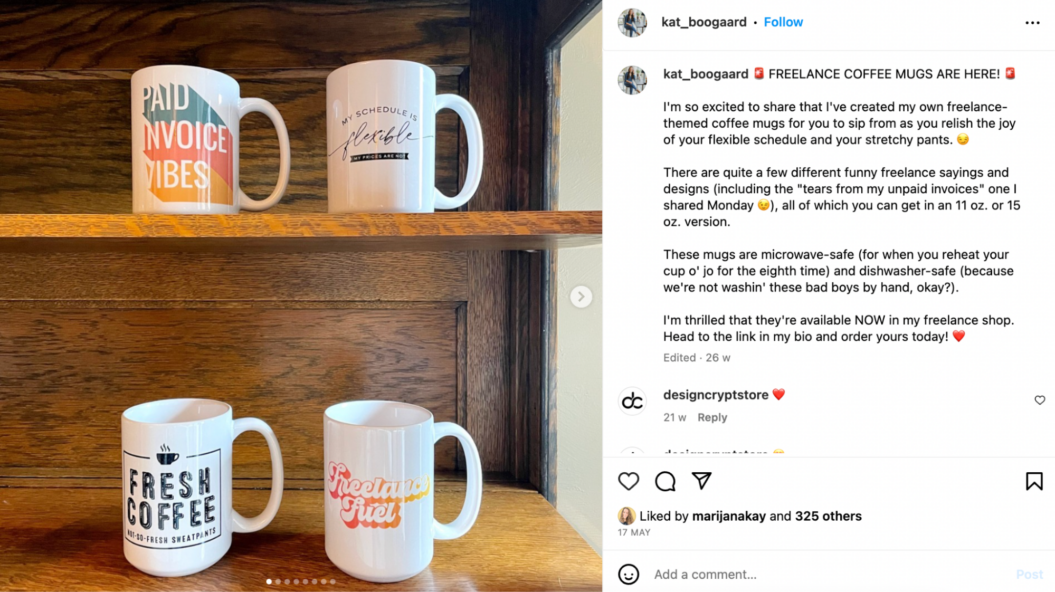
These physical products act as an extension of her brand as a freelance writer, providing an additional income stream from her day-to-day work as a writer.
Naturally Sassy uses her Instagram to share health and wellness tips along with short snippets of her ballet-inspired fitness and wellness tutorials from her membership:
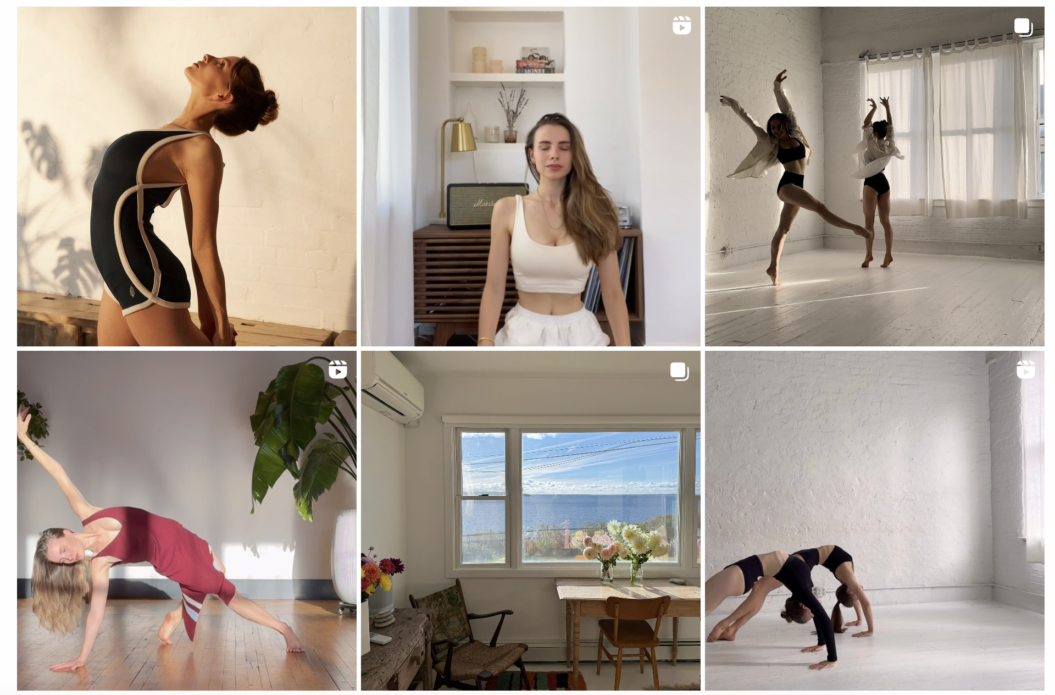
These videos give Sassy’s attentive Instagram followers tips on how to lead a healthy lifestyle with movement, breathwork, and food. She positions herself as an expert who practices what she preaches with high-quality content.
While her passive followers get a lot out of her informational Instagram page as is, her most dedicated fans can get even more value from her online fitness plans:
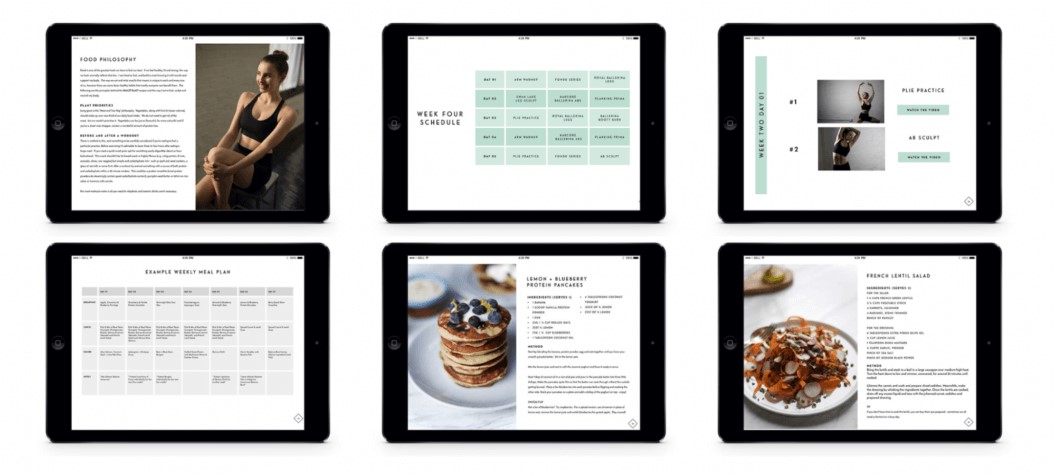
How to get started with Instagram products
Take a look at the people in your audience and what they use, wear, consume or interact with daily and find something that will resonate with them.
Selling physical Instagram products
If you’re planning to sell merchandise, you can use dropshipping to manage the logistics of it. This is a setup where you arrange for the manufacturer to ship merchandise directly to the Instagram customer. You completely bypass production, inventory storage, and shipping hassles.
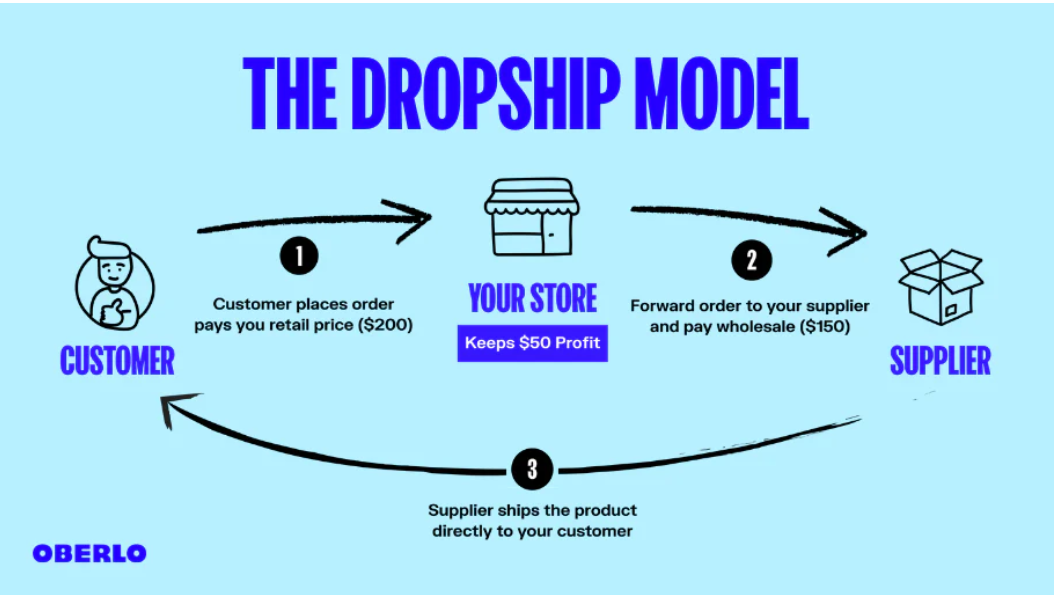
When setting up your own online store, you can use a dropshipping app like Oberlo to coordinate the process.
Selling digital Instagram products
If you have niche-related knowledge, you can use that to create digital products, which are low-cost products that you can create once and sell forever.
They’re also high-ticket items to sell through Instagram. Specialized online courses—like The Part-Time Creatorpreneur by Ali Abdaal—retail for $799. Even just a few sales per month could help you turn Instagram into a full-time job.
You can also use your Instagram platform to promote membership and premium video content, as a key channel in your marketing funnel.
Learn 5 ways to do this by watching our handy YouTube guide:
5. Offer coaching or consulting services
What is coaching and consulting?
Coaching and consulting both educate or help your audience solve a specific pain point they’re experiencing in their lives. That could include anything from learning how to do magic tricks to self-discovery through astrology—and everything in between.
It’s a way of trading your time and niche knowledge for money, where you work with clients one-on-one.
Why creators love coaching and consulting
If you want to start an online business that doesn’t involve digital or physical products, then teaching people what you know is a lucrative way to earn money from Instagram.
Instead of relying on one-off sales, the most successful Instagram creators incorporate coaching into their membership programs. Research shows that 41% of creators monetize their membership with coaching or consulting services.
One-to-one coaching and consulting services also tend to command higher prices. Your followers pay a premium for the privilege of working with you directly. They can get answers, feedback, and advice from the creator they already know and trust.
The downsides of coaching and consulting to consider
Coaching and consulting on Instagram requires you to trade time for money. This is a business on its own and to offer a valuable service to your paying clients, you’ll need to build out your offering outside of Instagram’s platform.
This means putting the work in to create a service that meets the expectations of your paying clients, and offers the best possible experience.
What does coaching and consulting look like?
Take Jay Clouse, the creator of The Lab. He incentivizes his audience to pay for a more expensive membership tier because the VIP subscription offers 1-to-1 coaching. He’ll earn almost $3,000 each year someone stays subscribed.
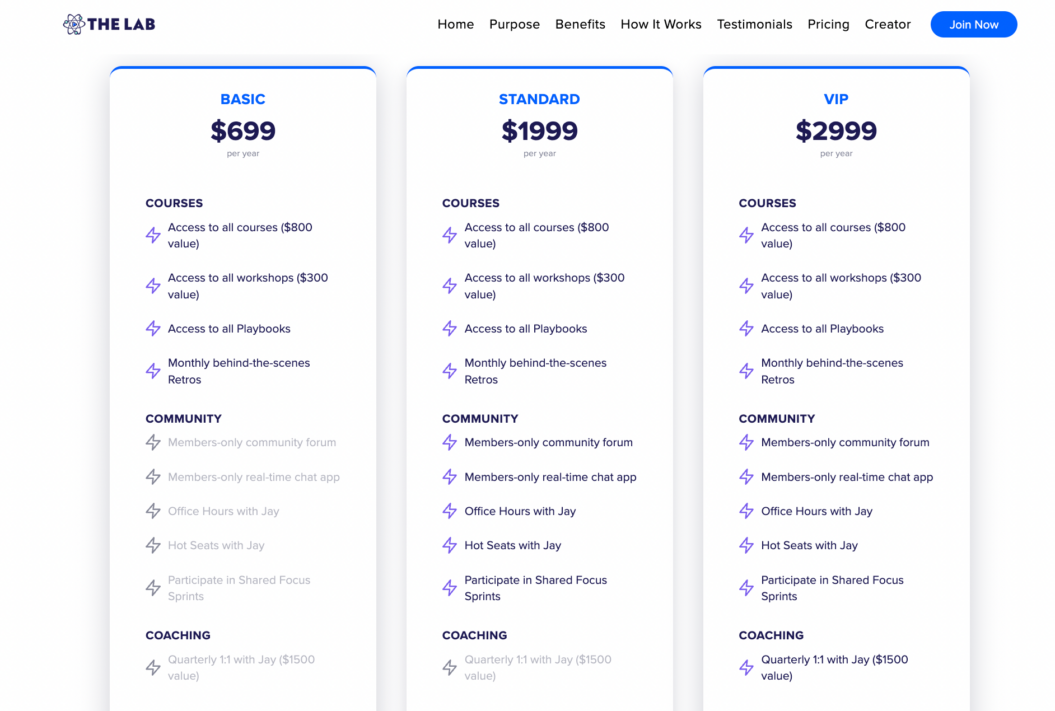
Learn the secret to his membership success and why this model is so successful for him by watching our video below:
How to get started with coaching and consulting
The simplest way to sell coaching services is to create a landing page that tells your Instagram followers about your service. You should include:
- The problems you can help with
- The goals you can help your audience achieve
- Testimonials from other clients you’ve coached
- A link to book your coaching service (e.g. a Calendly link with a payment form)
Then you can promote your services to our Instagram followers, where they can follow the link to learn more about what you’re offering and sign up for a time slot.
6. Host live streams to earn badges
What are Instagram badges?
Instagram Badges are a feature on Instagram Live, which helps you generate extra revenue from your live videos. Badges are a way for your followers to tip you mid-stream. Users can buy badges in increments of $0.99, $1.99, and $4.99.
When followers give their badge to you, a heart appears beside their username and the tip gets deposited into your bank account by Instagram.
Why creators love Instagram badges
The best thing about Instagram badges is that your followers are paying you directly. It’s an easy way to make money because once you have it set up, all you have to do is go live consistently and maintain a close connection with your followers.
If you’re already nailing your live videos, then it’s a no-brainer to enable badges. It doesn’t change the content you’re putting out there, and you get that sense of satisfaction from knowing your followers are enjoying it enough to tip you.
Downsides of Instagram badges to consider
You have to consistently go live on Instagram to use badges. This can feel limiting because you might not reach as many people, and these are one-off payments rather than a predictable revenue stream.
But the more you go live, the more opportunities you have to earn badges and build up a closer relationship with your followers.
What Instagram badges look like
When someone buys a badge, you’ll see purple hearts appear next to their name like the example below:
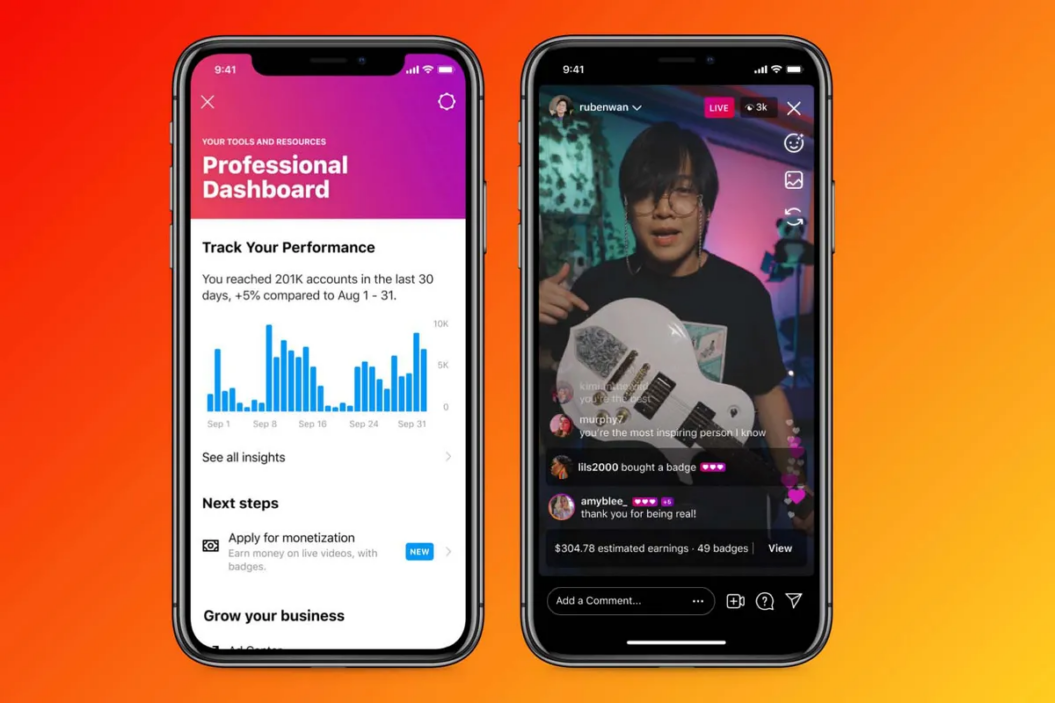
These will pop up as you live stream, where both you and the people tuning in to watch will be able to see them. Then afterwards, you’ll see the results in your dashboard.
How to get started with Instagram badges
Firstly, to qualify for Instagram Badges, you must:
- Be located in the US and aged 18+
- Comply with Instagram’s partner monetization policies and community guidelines
- Have more than 10,000 followers on Instagram
Eligible creators based in the UK, France, Spain, Italy, Germany, Japan, Australia, Turkey, Brazil and Mexico are currently only able to access badges by invitation only. Keep checking your status in your creator account for updates.
If you are eligible, all you need to do is switch them on in your creator account and you’re good to go.
Tips for making money with Instagram Badges
The secret to making money with Instagram Badges is to build a loyal connection with your audience. That means:
- Going live on Instagram regularly
- Giving people behind the scenes access
- Interacting with followers in real-time, like answering their questions or asking for feedback
Some select creators also see success when they tell Instagram followers what the tip supports. If you’re a small influencer looking to quit your day job, for example, you could tell people how their Badges make that possible—and that when you do go full-time on Instagram, how much extra content they’ll get.
7. Launch an Instagram subscription
What are Instagram subscriptions?
Instagram subscriptions allow you to sell exclusive content directly to your followers in exchange for a monthly fee. Subscriber-only content is only accessible to your paying subscribers, where you can create exclusive types of Instagram content, like posts, lives and stories especially for them.
Why creators love Instagram subscriptions
Instagram subscriptions allow you to build a source of recurring monthly revenue by converting your most engaged followers into paid subscribers.
It gives you more control over what you’re posting, because you’re not beholden to the rules of sponsors and external brands. Instead, you can post what, and how, you like; giving that extra feel of authenticity to your exclusive content.
Downsides of Instagram subscriptions to consider
While you can set your own subscription price, Instagram does limit you from choosing a set price between $0.99 to $99 per month (there are 8 options) so you don’t have full control over what you charge.
Also, subscriber-only content looks pretty much the same as all the content your followers can access for free—it’s in the same format and shows up in their feed alongside everything else.
This means you need to consistently put the effort in to make it stand out, so that it’s worth paying for in the long run.
What Instagram subscriptions look like
Your subscribers will see exclusive content highlighted at the top of their feed, but the overall experience of consuming paid content on Instagram is the same as what’s freely available.
Chanel Kreuzer, an American artist and Instagram influencer who has 27,000 followers, charges $1.99 to access behind-the-scenes videos and art tips. If she has 200 paying subscribers, Chanel will earn $398 per month directly from her Instagram profile.
When you tap onto the option to subscribe, it gives a breakdown of what you can expect:
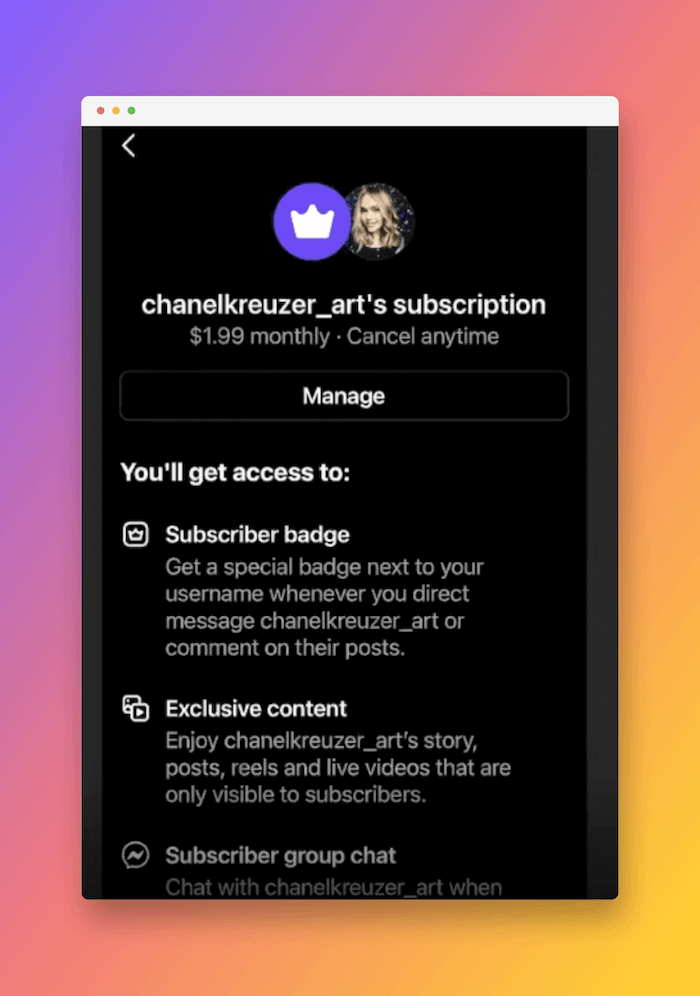
How to create a subscription on Instagram in 5 easy steps
1. Ensure you meet Instagram subscriptions eligibility requirements
Instagram subscriptions are available to creators who:
- Are aged 18+
- Comply with Instagram’s monetization policies and community guidelines
- Have a professional Instagram account and more than 10,000 followers
- Are in a country where subscriptions are available
- Have an account that isn’t primarily focused on children’s content
You can easily check if you’re eligible to start an Instagram subscription by opening up your Instagram app and tapping on the ‘professional dashboard’. You’ll see an option for setting up an Instagram subscription in there if you’re eligible.
2. Enable your subscription on Instagram
The process of setting up a subscription on Instagram is pretty simple. First, go into your professional dashboard in the app where you’ll see an option to ‘set up subscriptions’ (if eligible). Tap that, and then hit ‘next’ where you’ll be asked to agree to the terms.
Then set what you want your monthly price to be (more on that below), hit the publish button and tap ‘create’. And, that’s it. You’re now ready to start creating and sharing exclusive content for your new subscribers.
You can also navigate through the process via your settings, which Trevor Nace runs through on his ‘How To’ video on YouTube.
3. Set your price
As mentioned earlier, the cost of Instagram subscriptions range from $0.99 to $99 per month. There are eight set pricing options available: $0.99, $1.99, $2.99, $4.99, $9.99, $19.99, $49.99, and $99.99.
There’s a few key factors to consider when setting your monthly price. Afterall, you want to maximize your chance at gaining revenue from subscribers, without setting the price too high and putting them off, or worse, not living up to their expectations.
First, look at the number of followers you have, and what kind of engagement you’re getting. If you have a large dedicated audience of engaged followers that want to hear more from you, then you’ve already laid the groundwork for enticing them to tap the subscribe button and be happy to pay for exclusive content.
For example, entrepreneur Tai Lopez prices his subscription at $19.99 per month:
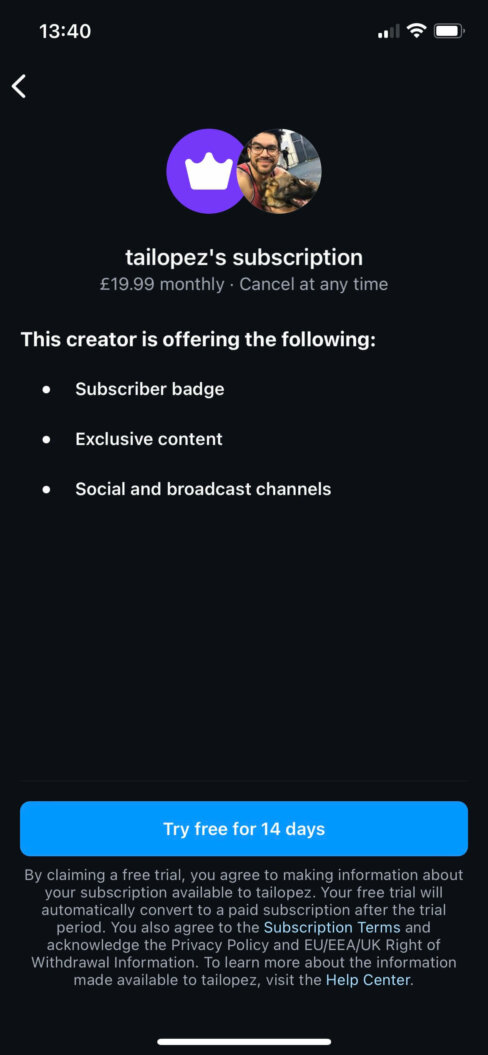
He has a huge following and mentions the number of paid students he has, suggesting that subscribers will learn valuable insights by tapping the subscribe button:
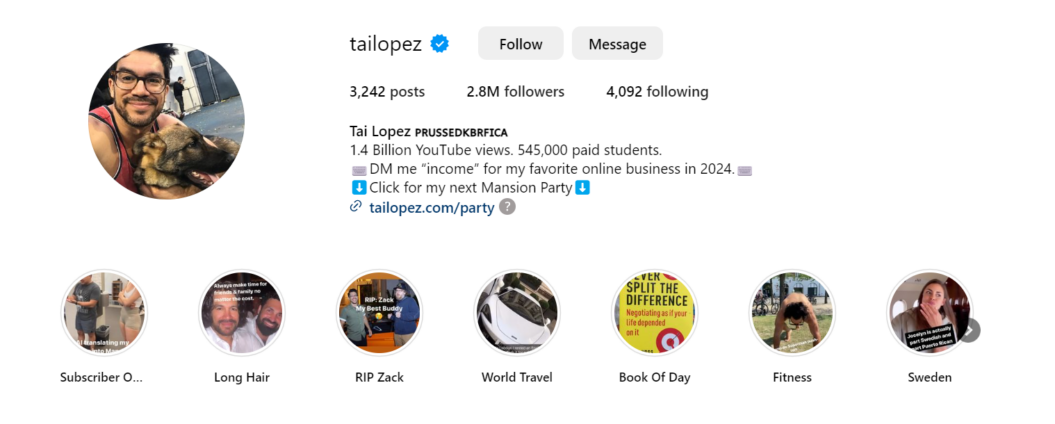
If you’re less established and just dipping your toe into the world of monetizing your content then you might find a lower price tier works better for you, while you focus on creating great content and building up your subscriber base.
The price different creator’s charge will vary depending on how they are, and the perceived value of their paid content so make sure you do your research to find out what the audience expectations are for your niche, and what your competitors are charging for their Instagram subscriptions (if they offer one).
Next, think about your content. How does it differ from the posts that are freely available for all your followers? How often do you plan to release exclusive content for your subscribers? You want to make sure it’s valuable enough that subscribers want to stick around, giving you the best chance at generating recurring monthly income.
4. Understand the different content types you can create
Instagram subscriptions offer largely the same types of content that you can post and access for free, the difference being that they’re only accessible behind a paywall. You can create exclusive reels, channels, live videos and even subscriber exclusive stories.
Here’s the full list:
- Subscriber Lives
- Subscriber stories
- Subscriber badges
- Subscriber posts
- Subscriber reels
- Subscriber social channels
- Subscriber broadcast channels
Creating content that has more of an intimate feel to make your subscribers feel special by being part of this exclusive community is the key to making it work. It’s an opportunity to interact with your subscribers, monitor what resonates with them the most and use these insights to form a deeper connection.
5. Tell your followers
Unless you tap into someone’s profile, it’s not always immediately obvious which creators offer an Instagram subscription. Your existing followers are going to be mostly seeing your posts when they scroll through their feed, so make sure you shout about your subscription and invite them to subscribe.
See it as a new product you’re marketing. Highlight the benefits, tap into the emotions of your audience and keep promoting it both on and off Instagram to increase your chances of gaining more subscribers.
Why it’s important to ‘own’ your revenue streams
While there’s lots of opportunities for creators to monetize on Instagram, there are drawbacks to consider too.
Instagram – like every other social media platform – is run by an algorithm. Your accounts are also at the mercy of the platforms themselves. This makes it risky to rely on these public platforms to generate an income because you’re not in control of it.
It’s a valuable way to build your audience but long-term, getting your followers on your email list means you can communicate with them directly and monetize your content on a platform that you have ownership of.
How to ‘own’ your revenue through an exclusive membership site
A membership site is a place to bring your followers together and combine premium content with a thriving community.
Take Studio Bloom, for example—a fitness community created by Brooke Cates that offers pre- and post-natal workouts for new moms. To monetize their social following on Instagram, Brooke launched an online fitness membership site to offer online workouts in video form.
Studio Bloom’s Instagram posts and reels act as a preview to their full paid workout videos. They use their Instagram account to get people hooked on their content and keep them wanting more, which creates interest in and referrals back to their independent video streaming site hosted on Uscreen.
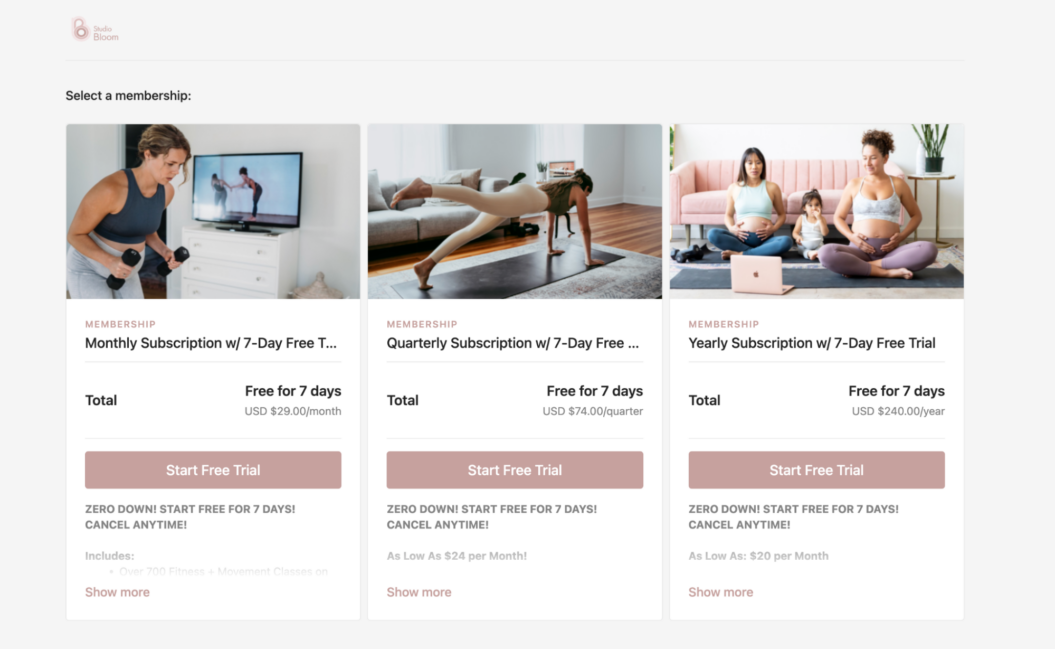
Within just 10 months after launching, Brooke managed to shift her business entirely online. Studio Bloom now makes over $87K a month and continues to grow. They saw a 30% increase in subscribers in the last 3 months alone.
The creator funnel illustrates how your Instagram audience can turn into paying subscribers:
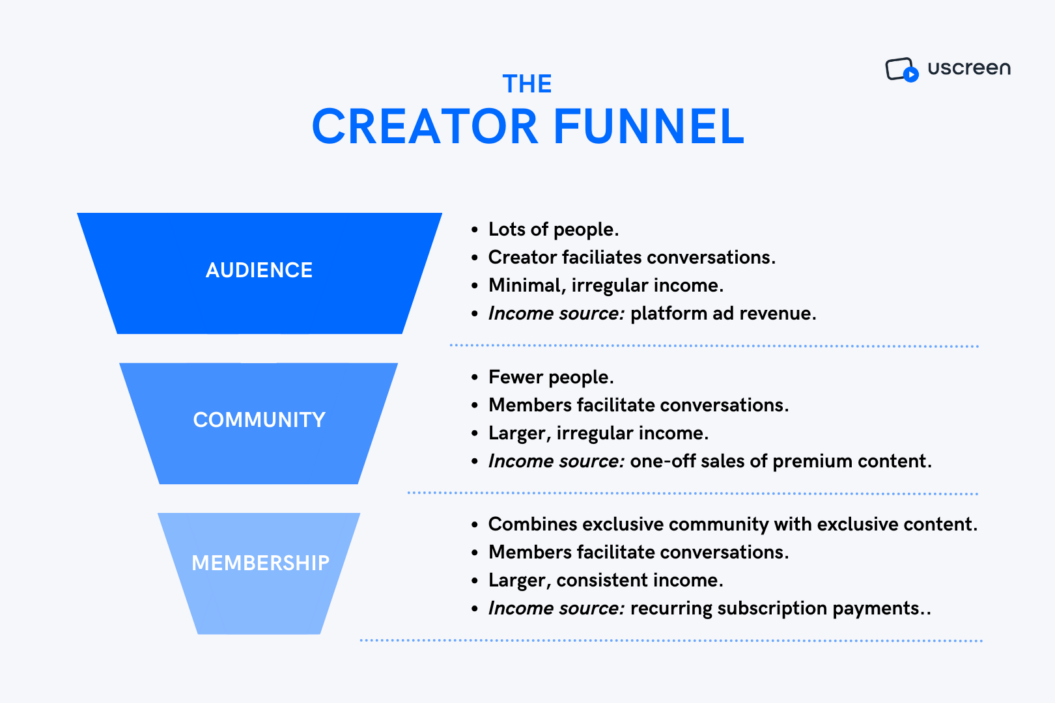
At the top of the funnel (your Instagram account), you’re responsible for creating new content. Your followers talk to you, but there isn’t much interaction between members. It’s on you to start conversations.
Your Instagram audience turns into a community when members start interacting with each other. This could happen through chat features, live streams, or question and answer sessions.
Finally, you start monetizing your Instagram followers when they subscribe to your membership, allowing them to access exclusive content alongside a member’s only community.
💡Need inspiration? Check out the different types of memberships creators have launched and monetized with Uscreen
Final thoughts on making Instagram work for you
It doesn’t matter if you’re a nano influencer, or a creator with a huge celebrity following, there’s plenty of ways to make money on Instagram.
It’s an easy way to take your first steps into monetizing your content and building your brand and audience, but to truly generate reliable recurring revenue that you have control and ownership of – you’ll need to step outside of social media to make it happen.
Like the sound of having that level of freedom? Try Uscreen for free and experience your true potential.
Build, launch and manage your membership, all in one place.
Instagram monetization FAQs
To use Instagram’s monetization features—Subscriptions and Badges—you must be aged 18+, comply with the platform’s policies, and have at least 10,000 followers on a professional or business account.
Navigating the Instagram monetization journey can be fraught with pitfalls. A common misstep is overlooking the power of genuine engagement. Remember, a highly engaged smaller audience can be more lucrative than a vast but passive follower count.
Avoid putting all your eggs in one monetization basket; diversity in income streams—from offering your own branded memberships to sponsored posts—ensures stability amidst Instagram’s fluctuating algorithms.
Instagram’s monetization terrain is ever-evolving! While there haven’t been direct algorithm shifts impacting earnings since the latter part of 2021, the platform’s focus on video content, especially Reels, underscores a pivotal strategy for creators aiming to monetize.
Instagram now favors engaging, interactive content that sparks conversations and builds communities. For creators, this means diving deep into video, honing in on a specific niche, and forging authentic connections with your audience.
You don’t need millions of followers to generate revenue on Instagram. According to a HypeAuditor report, you can earn up to $1,400 per month with just 1,000 Instagram followers.
